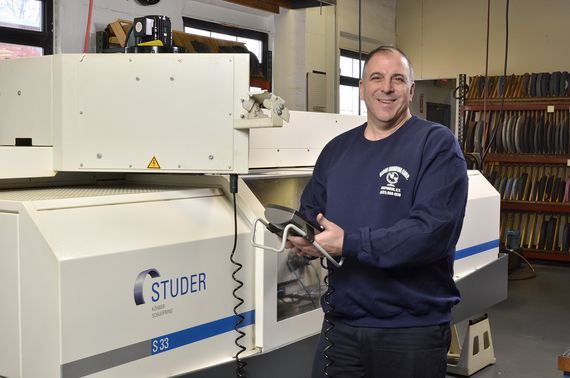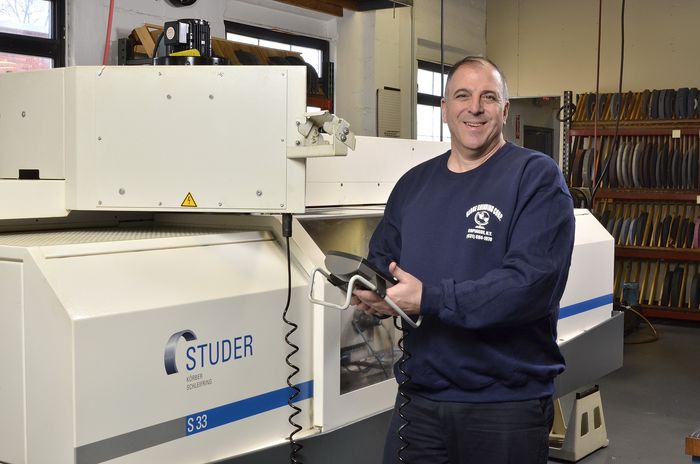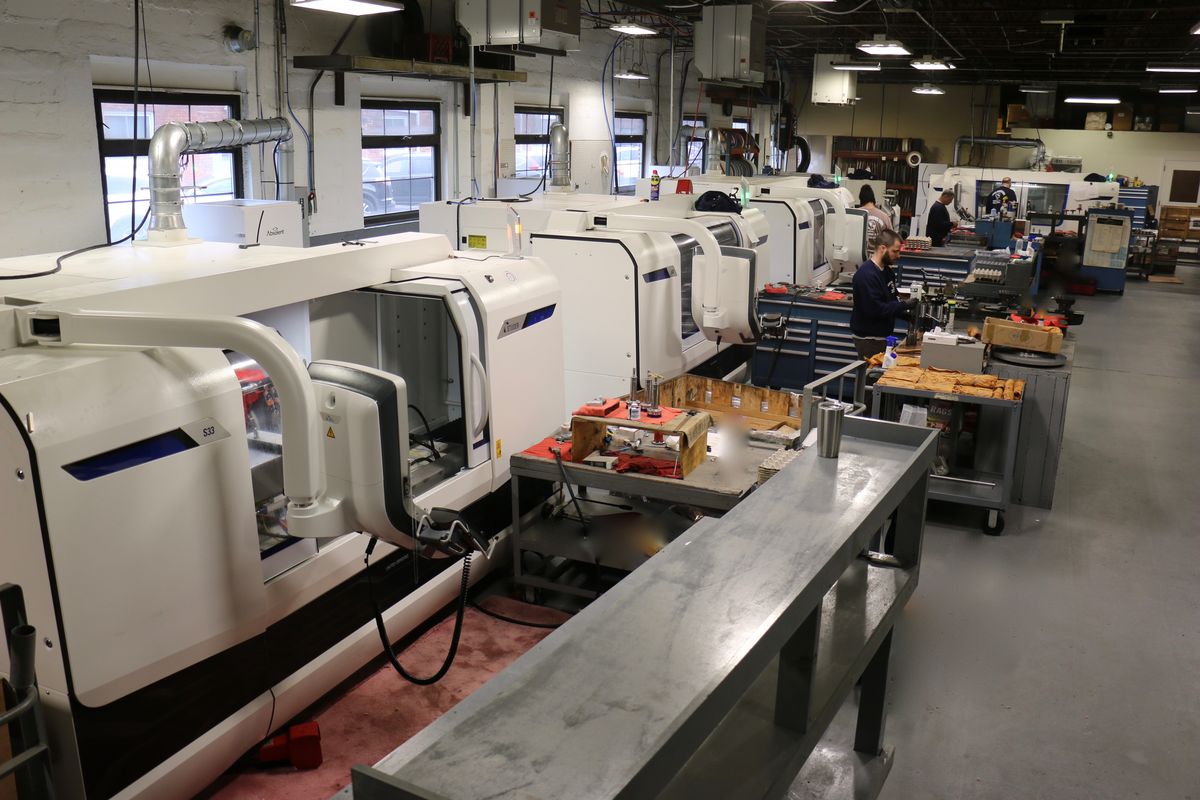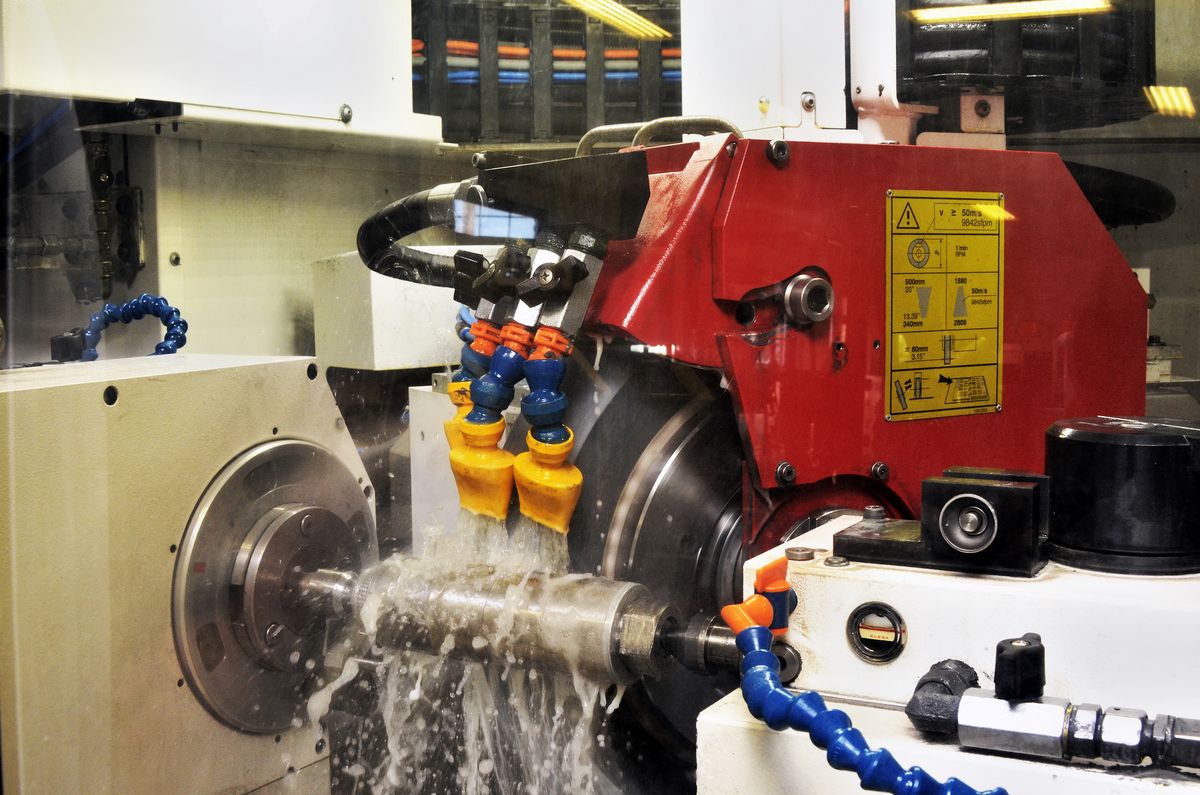Globe Grinding Sets a Course for Automation
Founded in 1967 in Copiague, New York, Globe Grinding specializes in cylindrical and centerless grinding. As President Jeff Rapisarda puts it, “We’re a very service-oriented business.” In addition to some jobs for the automotive and motorcycle manufacturing sectors, the shop focuses primarily on challenging work from medical and aerospace suppliers. The shop is busy, has grown about 15 percent over the past year and continues to add new technology, such as a part-checking system, that will allow them to do jobs more quickly – and with its existing workforce.
Unfortunately, the skills gap is present even in Long Island. Despite the company’s growth in terms of jobs, the shop hasn’t grown significantly in terms of workers, and finding experienced operators, particularly those capable of handling the challenging grinding operations required for the company’s most demanding customers. Instead, the company has worked with its suppliers and grinding machine OEMs to maximize the potential of its machining capacity – and lay the groundwork for further process optimization with automation.
Globe Grinding has focused initially on automating processes like measurement, equipping more machines with post-gauging equipment. “You always check the parts,” said Rapisarda, “but with the gauging, once you set it, it’s pretty much ‘set it and forget it.’ You still have to check the parts, make sure the finish is good, and that they are to size – then you have to double check, so the gauging is a big deal. Plus, you can put almost anybody on the machine after that.” According to Rapisarda, gauging cuts the time required to flag a part and perform length positioning to a mere six seconds, a significant improvement over probing.
The next step for Globe Grinding will involve transitioning to automation. The shop has been using CNC technology since 2000, when it bought a STUDER S30 Lean Pro cylindrical grinder, but adding further automation presents a non-trivial integration problem; grinding automation will naturally be required to increase production without adding personnel, but for the highest level of efficiency, the machines themselves need to be configured for fully integrated part loading/unloading. For this, Globe Grinding turned to UNITED GRINDING North America.
For its cylindrical grinding needs, Globe Grinding has been a loyal STUDER customer over the last two decades. The shop routinely upgrades its equipment to stay on the cutting edge of manufacturing technology; after acquiring a second S30 Lean Pro, for example, the shop sold those first machines – which retained much of their value – and acquired a STUDER S33. Most recently, Globe Grinding has added more of the latest STUDER S33 models with the hydraulic tailstock required for later integration with the company’s automation solution, the UNITED GRINDING flexLoad.
As a universal cylindrical grinder, the STUDER S33’s dual spindles permit both external and internal grinding in one setup. For additional flexibility, the machines can be quickly converted from live spindle grinding to grinding between centers, all of which serves to help Globe Grinding meet the ambitious production schedules set by its customers.
The STUDER S33s tout a 0.000016" (0.0004 mm) standard roundness accuracy during live grinding and easily handle individual and batch production of medium-size workpieces. Globe Grinding purchased models with a distance between centers of 39.4" (1,000 mm) and center height of 6.9" (175 mm). With C axes, the machines can form and thread grind as well for the greatest level of process versatility.
Further speeding up part production, particularly in the era of the skills gap, is STUDER Pictogramming. Pioneered by STUDER, Pictogramming enables the Globe Grinding operator to program a machine by assembling graphic pictograms or subroutines based on the desired results. Each cycle has its own distinctive symbol or “Picto” that enables the process parameters to be queried in a simple dialog. The pictograms also provide access to STUDER’s comprehensive workshop-based library of grinding applications and can execute pictogrammed cycles to accomplish setup, tool definition and management, corrections, creation of programs and process visualization.
“It makes every job easier and faster than with manual machines, which lets us keep employees. Keep the jobs, in other words, with no issues,” said Rapisarda about the S33. And with automation in the company's future, Globe Grinding looks forward to protecting its workforce with even greater productivity enhancements.
A standard system for many STUDER O.D. and I.D. grinding machines, the flexLoad system boasts a six-second load/unload time thanks to a fully integrated design and powerful FANUC 6-axis robot. A full-system enclosure protects operators with interlocking safety features that keeps doors locked when necessary while still providing full access to the system’s three completed parts drawers. In total, the system has been estimated to save nearly $2 million in labor costs and productivity enhancements over a 15-year period of five-day work weeks by improving productivity by 33 percent per shift compared to human operators working alone.
Repeatability is another important consideration, and one that will be even easier for Globe Grinding to achieve with automation. Presently, it focuses on process control to maintain its position in the market. As explained by Rapisarda, the shop’s customers “want a paper trail and for their job to run on a specific machine, to be ground the same way every single time, with specific wheels, feeds and speeds and coolant.” For Boeing work, for example, Globe Grinding must follow Boeing’s BAC5032 standard when grinding the company’s chrome plated parts.
In addition to automation-ready grinding equipment, Rapisarda and the Globe Grinding team have made further improvements to its quality control and validation processes. Additional statistical process control (SPC) equipment, as well as advanced laser gauging capabilities, expedites record control and helps the shop meet customer demands. The facility itself has also seen improvements, such as new air cleaning equipment and a dedicated room for compressors to better control the ambient noise level on the shop floor.
This, in combination with the NADCAP certification the company received in recent years, has given the shop a new level of confidence in its ability to partner with the world’s most advanced manufacturing companies. “It’s a lot of paperwork,” confesses Rapisarda. “Where’d you do it, how’d you do it, what wheel did you use, what speeds and feeds with the CNC. You need to put a lot of things into your system to make sure that everybody knows what to do when a job comes in. But now, every job you do, whether it's a little commercial job for somebody or aircraft or any kind of medical, it's all done to NADCAP specs.”
The speed and flexibility of its STUDER machines also enable the shop to meet continually changing customer demands and deadlines. Workpiece materials range from standard irons to steels as well as stainless, titanium and exotic aerospace alloys. Production volumes can range from single parts to lots of a thousand pieces, many of which must be held to tolerances down to around 0.0001". The shop usually juggles around 30 jobs on the floor at any one time.
Rapisarda’s father founded Globe Grinding in 1967, and currently Jeff and his brother Rob run the shop. Rapisarda plans to keep Globe Grinding a family business, with his son Michael set to take over the business in a few years. As a result, the next Rapisarda to oversee Globe Grinding is taking classes with OEMs and garnering more experience in grinding technology. Always quick to embrace change, Rapisarda has made continuous improvement key to the shop’s success. “Many aspects have changed – from coolant to grinding wheels to grinding machines – due to the ever increasing demands for tight-tolerance, high-quality parts.” And with the addition of part-checking and other advanced systems, as well as the promise of automated processes to come, the shop will likely continue to navigate its way to success.












